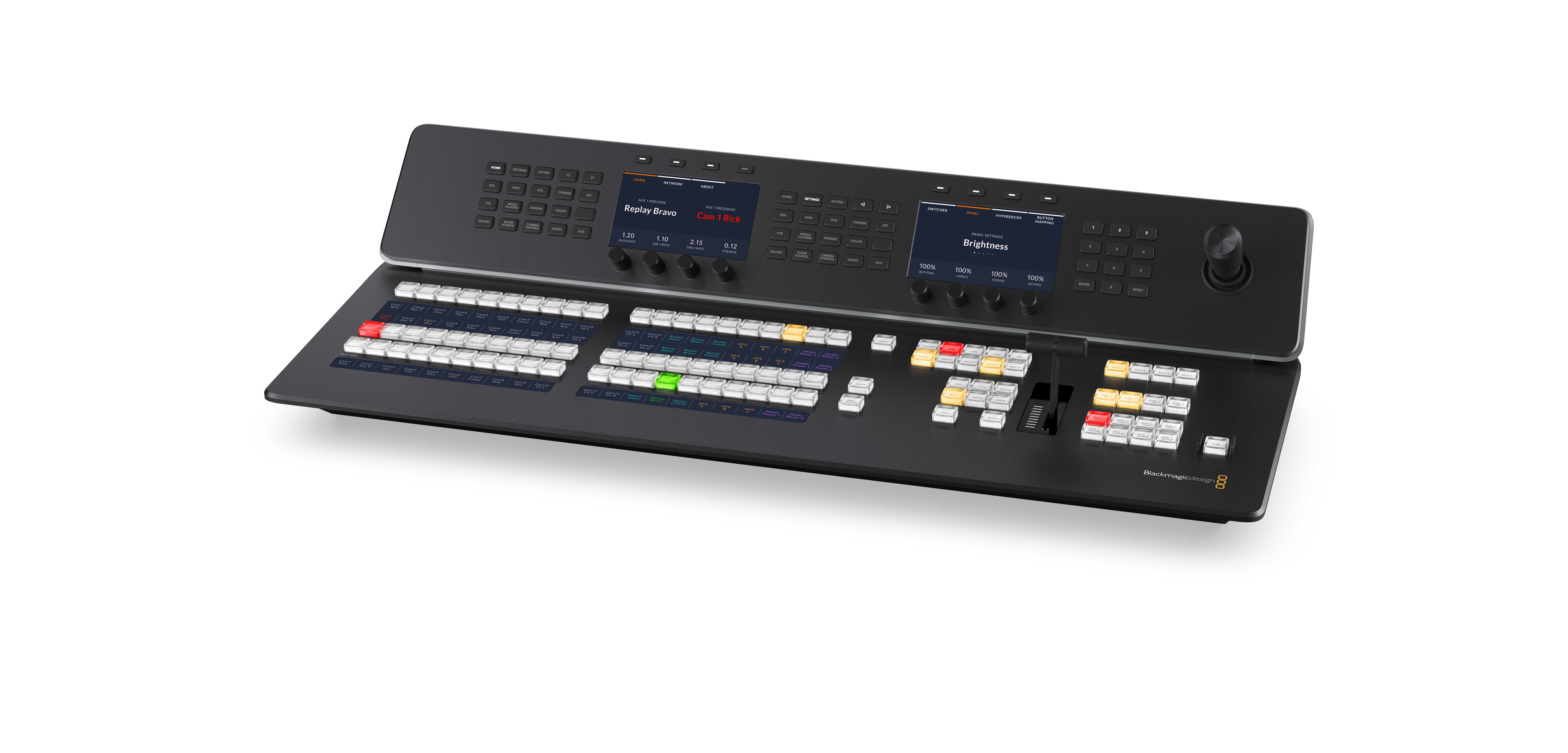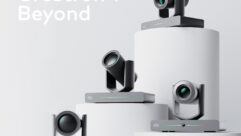 On this edition of the SVC Podcast, Contributing Editor Bennett Liles talks with Alex Peake of JCA Media in Louisville, Kentucky about the new sound system installation for Campbellsville University’s Finley Stadium. The system features four Danley OS80 main speaker enclosures, an OS12CX and a BC412 subwoofer. All of these are powered by two 4-channel Danley DNA 10k4 Pro amplifiers with integrated DSP and custom presets.
On this edition of the SVC Podcast, Contributing Editor Bennett Liles talks with Alex Peake of JCA Media in Louisville, Kentucky about the new sound system installation for Campbellsville University’s Finley Stadium. The system features four Danley OS80 main speaker enclosures, an OS12CX and a BC412 subwoofer. All of these are powered by two 4-channel Danley DNA 10k4 Pro amplifiers with integrated DSP and custom presets.
FOR MORE: GO TO PART 2
Links:
- JCA Media in Louisville, Kentucky
- Danley OS80 speaker enclosure
- Shure QLX-D microphones
- Danley Nano Cube
For their home football games, Campbellsville University was using a sound system that was on its last legs. JCA Media came in with Danley speakers, an Allen & Heath mixer and Shure mics to give the system back the punch it once had. Alex Peake is here to tell us how they did it. Coming up right now on the SVC Podcast.
Alex, good to have you here with us for the SVC Podcast from JCA Media and I believe you’re in Lebanon, Kentucky.
Yes, I’m in Lebanon, Kentucky and JCA is based out of Louisville, Kentucky.
OK so tell us about JCA Media before we get started on what you did with this project. From what we’ll be talking about here, I guess one of the things you do is college football stadiums.
Yes. We do a whole lot of work with Campbellsville, especially. We do a whole lot of athletic facilities; getting more into the college market. We are a small company, but we’ve done our slew of high school and some college things. But JCA Media is a small company based out of Louisville, Kentucky. It was started by Jim Cottrell back in – 1975 is when he actually started our recording and things like that. In 1990-ish is whenever he started JCA Media, the installation branch. But we are a small company and we pride ourselves on not cutting any corners and doing everything right and just being truthful about everything. So that is kind of who we are. [Timestamp: 1:28]
Yeah, you have to be good because word gets around in a small community like that.
It does.
And it can go positive or negative real quick.
And we do – I mean, 90 percent of our work, honestly, is with churches. So every one of us that are actually install techs, we are all church techs at our churches as well. So we’re a Christian company and all of our guys, that’s just kind of our mindset. We want to do people right and do things right and just do the best we can at what we do. [Timestamp: 1:54]
And in this case it’s a local college football stadium at Campbellsville University and I think it’s called Finley Stadium.
Ron Finley, Finley Stadium. Yes, sir.
OK and how did you get connected with them? Did you work with them before or are you a former student there?
Both. I am a former student and another one of our install tech is also a former student – and both of us worked there as AV techs. As a matter of fact, Robert Bender, which is the other install guy – one of our main other install guys – he was the AV coordinator for the university for about a good three or four years, and I was actually part-time underneath of him for two or three of those years. So we both worked at the university and know it inside and out and know everybody there, and we actually have been doing almost all of their AV for quite some time. As a matter of fact, JCA was doing their installs when we worked at the university. That’s kind of how this all tied together is when we worked at the university, JCA came and did our installs whenever we had new projects come along. We helped them a little bit just because we were AV guys there anyway. Before you knew it we were being pulled on for contract labor for other jobs and so it just kind of grew that way. But in terms of Campbellsville, yeah, we go way back. I graduated in ’11, Robert graduated in ’10, so we know all the guys there and do all the work for them, pretty much. And the stadium was kind of the first large project that we did with JCA for Campbellsville. [Timestamp: 3:16]

Now that’s not a huge place as far as stadiums go but once you get a hometown crowd in there and football is big, especially in the smaller towns, they want to get energized and they can’t do it with a broken down sound system. How old was the Finley Stadium sound system when they called you in for an upgrade? What was the situation they had there?
That one was roughly 10-12 years old. It was not a bad install originally, it was not. Honestly, weather had just taken its toll. I mean, those drivers were roughly 10-12 inch drivers. There was no low end support for that system. And you know, they play hip hop, they play OM stuff, and they crank it whenever they want to get hyped and get energized. And between that, between weather and life beating on those cabinets – the rain and all that stuff you get in Kentucky, ice and all that fun stuff – it had just taken its toll. And so over the past two years, I would say, is when you really noticed it was degrading and needed changing out. [Timestamp: 4:09]
And of course you have some serious temperature extremes there, too depending on the season.
Yep. I mean, right now it’s 92 degrees and back in February it was below zero a little bit. So we get our fair share of snow and ice and then fun heat during the summer, too, and crazy humidity. So we get a nice wide range of it. [Timestamp: 4:25]
With a situation where you have some relatively hard places to get into, and put the speakers up where they can be maintained, what made you decide on Danley speakers for this project?
We had been in talks with Danley for a couple of projects that were ongoing, and it was kind of one of those where we knew of Danley, we had heard Danley. We knew Danley was great, but it was one of those where that was the first job with the where the client said we want this to be good, even if it costs a little more and we just want a good product. And so that was the perfect solution where Danley came and said we’ve got our OS speakers that would work great for this application. We’ve got a nice monster sub we can shove in the bleachers and we can do a weatherized version of that. And so everything just kind of came into play and just worked well for that application. [Timestamp: 5:09]
You’ve got a press box there. They’ve only got stadium seating on one side of the field right now. Is that right?
That’s correct. Yes, that’s correct.
So on the other side, the crowd can gather just about anywhere following the action up and down the field where people in the stadium seats are going to pretty much stay where they are.
Yep.

So you’ve got to cover that whole other side of the stadium, too. Was there anything especially difficult with this particular venue’s arrangement?
Not necessarily. It was actually pretty straightforward. We used a combination of Danley OS80 and OS12CX cabinets. The OS80’s have a fantastic throw. There are two on each side of the press box. The ones on the front of the press box are facing straight forward, almost aimed at the other side of the field. But they have an 80-degree conical coverage so they cover well and they throw really well. If they wind up putting bleachers on the other side there will be no need to add any more over there. It really does cover that well. The baseball field is right past that and we had to make sure that we pulled those down to try and keep it off the baseball field because it will throw that far. And then there is an OS12CX, which is the short throw 12-inch cabinet that is right in the middle of the press box, pulled down a little bit to cover that small lobe that is missed by the OS80’s. Then we did two OS80’s on the outside of the press box facing those outer bleachers and then two more OS80’s on poles about 45-50 feet in the air to cover large areas where people tailgate on one side and the other where they watch from kind of the fence area where the band sits. [Timestamp: 6:37]
Ok and the OS80’s they are about 50 pounds each?
Somewhere in there, yeah. They’re 50-60; somewhere in there, yeah.
And those are housed in fiberglass are they not?
Yeah, it’s not a wood enclosure. It’s like a fiberglass enclosure. And that’s just one of the things that I think impressed us the most. When you hear an outdoor speaker a lot of times those enclosures hold up well against weather but a lot of times don’t sound the best. They don’t have the same punch and warmth as a wood cabinet. But these very much surprised us. They were very clear, have fantastic throw, and have a very good pattern control, honestly. So we were extremely impressed with those and their output is unreal for what you would expect from a cabinet that size. [Laughs] [Timestamp: 7:12]
Yeah, and especially if you were to go in with wood cabinets on anything like this I think you would have a lot more weight to deal with.
Yes, you would. Yes, you would. Yep.
And they probably stand up to the weather somewhat better than wood cabinets.
Yep.
Particularly after a long while so you want staying power with this setup.
Correct.
How did you get those mounted up there? You have some on the press box but there are some on poles, too. I would think the press box wouldn’t be that tough a situation.
Yeah. We actually mounted them all with just a man lift; about a 60-foot lift. Like I, myself, might have went up and put the bracket on, got it all safetied in and then raised up the cabinet and got it put in. It wasn’t bad. But we used a lift to actually do all seven mains. [Timestamp: 7:52]
Ok so how long did it take to get all of that stuff up there?
We took out the old speakers and every location that had an old is where we put a new because that did work well. And all of the lines that were there we reused because they were good lines. We had made that note to Campbellsville that if they needed to be changed out, if those lines were in bad shape we were going to change them. But all the lines were in great shape, they were a good gauge, they were well made. So we actually tore out, put back and re-tuned within the course of a week. [Timestamp: 8:18]
That really saved a lot of time I’m sure.
Yes, it did. Yes.
From the pictures I saw of this place, the stadium looks to be pretty much out in the open right now but I did see some construction going on. I’m not sure how recent that was.
That’s still going on. [Laughs]
Yeah and they may end up with something built up on the other side where it might require a few adjustments for limiting the bounce of the sound off of another building.
There’s a road on that side and then right past it is a practice field for the marching band. Right now, I don’t think there’s anything there yet. But if something gets constructed we’ll need to aim those things a little further down to try and reduce some of that overspill there. [Timestamp: 8:54]
That’s a pretty easy system to change, re-tune and adjust things for changing acoustics if there is construction going on.
Yep.
So what was it like when you got it all up? How different did it all sound then?
Oh my gosh, it was night and day. When we got it up and running and were kind of doing the tuning process, we set limiters as well. We had some of the surrounding buildings telling us to turn it down because they could hear it and it was [Laughs] – two hundred feet away they could hear every word. It was night and day, it really was. All of the athletic facility guys as well as the head of athletics over there, they were just floored at the output that those had. And that sub into the bleachers, it just rounds out the whole thing beautifully – and it’s just one sub. So they were beyond tickled and we were beyond tickled as well. I mean, it was just a really, really good-sounding system. And that is actually part of the reason that since that installation we have actually redone two more fields in Danley. [Timestamp: 9:45]
Well, then you should know the capabilities of the equipment by now so that’s a good thing and there are some other things that you did on this that we’re going to get into in Part 2.
Okay.
You put in another mixer and you added some mics so it was a complete sound system upgrade, not just the speakers. We’re going to be talking about that next time and I appreciate your giving us the story on how you got this stadium system up and running. We’ve been talking with Alex Peake from JCA Media working out of Louisville, Kentucky and the Campbellsville University Tigers Finley Stadium. Thanks for being with us Alex.
No problem.
So now the Campbellsville University Tigers can turn it up a notch, or maybe several, with their new Danley speakers and music playback. Alex will be back next week when we’ll hear about the Allen & Heath mixer and Shure wireless mics JCA Media included in the sound upgrade. So be back next week for the SVC Podcast.










